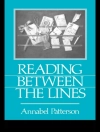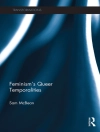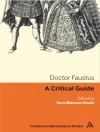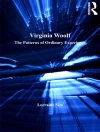This book gathers together an array of international scholars, critics, and artists concerned with the issue of walking as a theme in modern literature, philosophy, and the arts. Covering a wide array of authors and media from eighteenth-century fiction writers and travelers to contemporary film, digital art, and artists’ books, the essays collected here take a broad literary and cultural approach to the art of walking, which has received considerable interest due to the burgeoning field of mobility studies. Contributors demonstrate how walking, far from constituting a simplistic, naïve, or transparent cultural script, allows for complex visions and reinterpretations of a human’s relation to modernity, introducing us to a world of many different and changing realities.
Tabela de Conteúdo
Klaus Benesch and François Specq, Modern(s) Walking: An Introduction.- Part I. Poetics.- Emmanuelle Peraldo, Walking the streets of London in the eighteenth century: a performative art?.- Juliette Fabre, Musing, Painting & Writing: Walking as an Art in Diderot’s Promenade Vernet (Salon de 1767).- Estelle Murail, “Du croisement de leurs innombrables rapports”: Baudelaire and De Quincey’s flâneurs.- Thomas Pughe, How Poetry Comes to Him: An Excursion to Gary Snyder’s Wild Poetics.- Lacy Rumsey, Revisiting the American “walk poem”: A.R. Ammons, Charles Olson, and Jonathan Williams.- Part II. Performance.- Isabelle Baudino, Marianne Colston’s Art of Walking: Gendering the Picturesque in Journal of a Tour in France, Switzerland, and Italy.- Bridget Sheridan, Following Footprints: photography, writing and the artist’s book in art walking.- Gabrielle Finnane, Wayfaring in the Megacity: Tsai Ming Liang’s Walker and Lav Diaz’s Melancholia.- Tatiana Pogossian, The Art of Walking in Space and Time: the Quest for London.- Andrew Goodman, Walking with the world: towards an ecological approach to performative art practice.- Part III. Pathology.- Françoise Dupeyron-Lafay, The Art of Walking and the Mindscapes of Trauma in Thomas De Quincey’s Autobiographical Works: The Pains of Wandering, the Pains of Remembering.- Sarah Mombert, Writing Dromomania in the Romantic Era: Nerval, Collins and Charlotte Brontë.- Catherine M. Welter, A Juggernaut in the Streets of London: Walking as Destructive Force in R.L. Stevenson’s Strange Case of Dr. Jekyll and Mr. Hyde.- Amélie Moisy, Thomas Wolfe and the urban night prowl: walking, modernism and myth.- Sophie Walon, Existential wanderings in Gus Van Sant’s “Walking Trilogy”: Gerry, Elephant, and Last Days.- Part IV. Politics.- Julien Nègre, Perambulating the village: Henry David Thoreau and the politics of“Walking”.- Virginia Ricard, Walking in Wartime: Edith Wharton’s “The Look of Paris”.- Andrew S. Gross, Pound, Peripatetic Verse, and the Postwar Liberal Aesthetic.- Marie Mianowski, The art of the ‘good step’ in Colm Tóibín’s Bad Blood: A Walk Along the Irish Border (1987).- Andrew Estes, Walking and Technology in the Fiction of Jennifer Egan: Moving towards the Posthuman.
Sobre o autor
Klaus Benesch is Professor of English and American Studies at the Ludwig Maximilian University of Munich, Germany. He is the author of Romantic Cyborgs: Authorship and Technology in the American Renaissance.
François Specq is Professor of American Literature and Culture at the Ecole Normale Superieure de Lyon, France.












